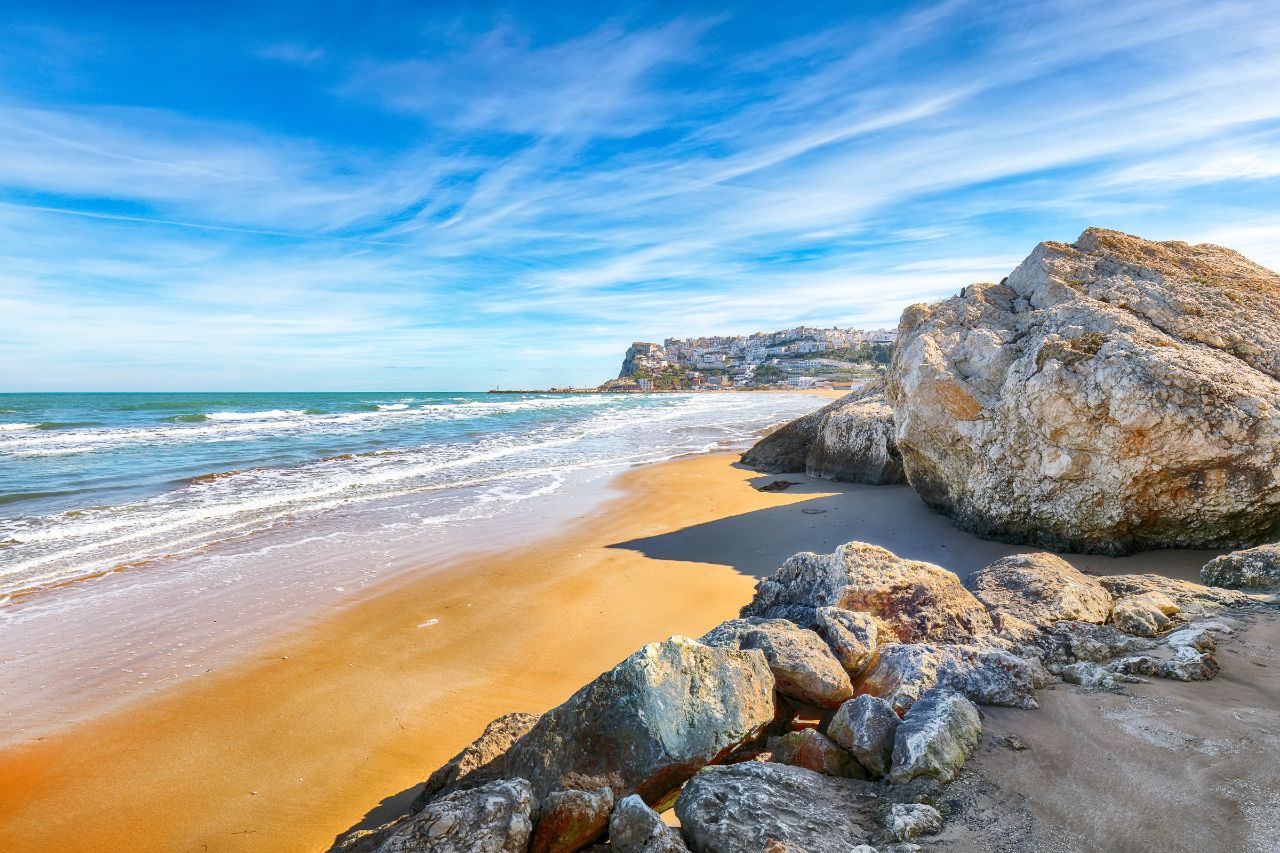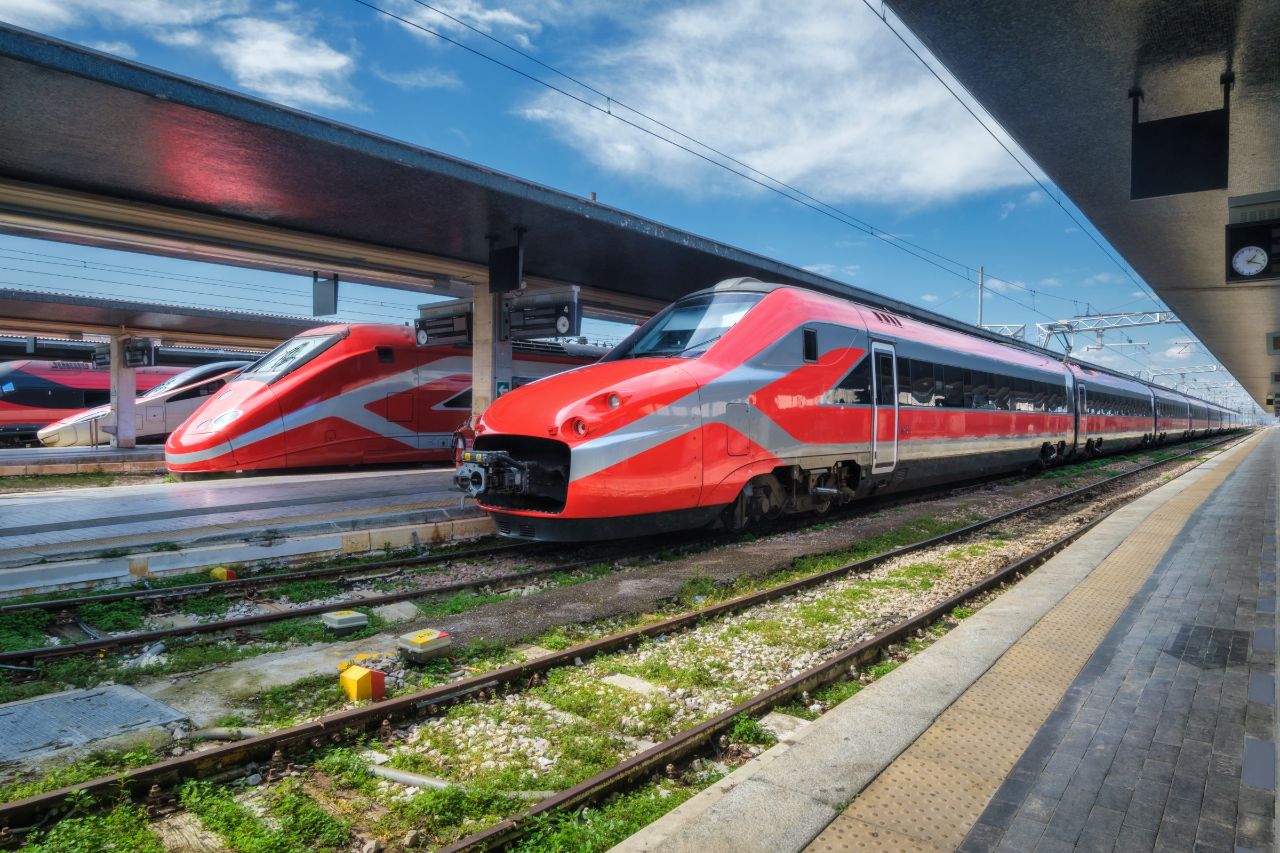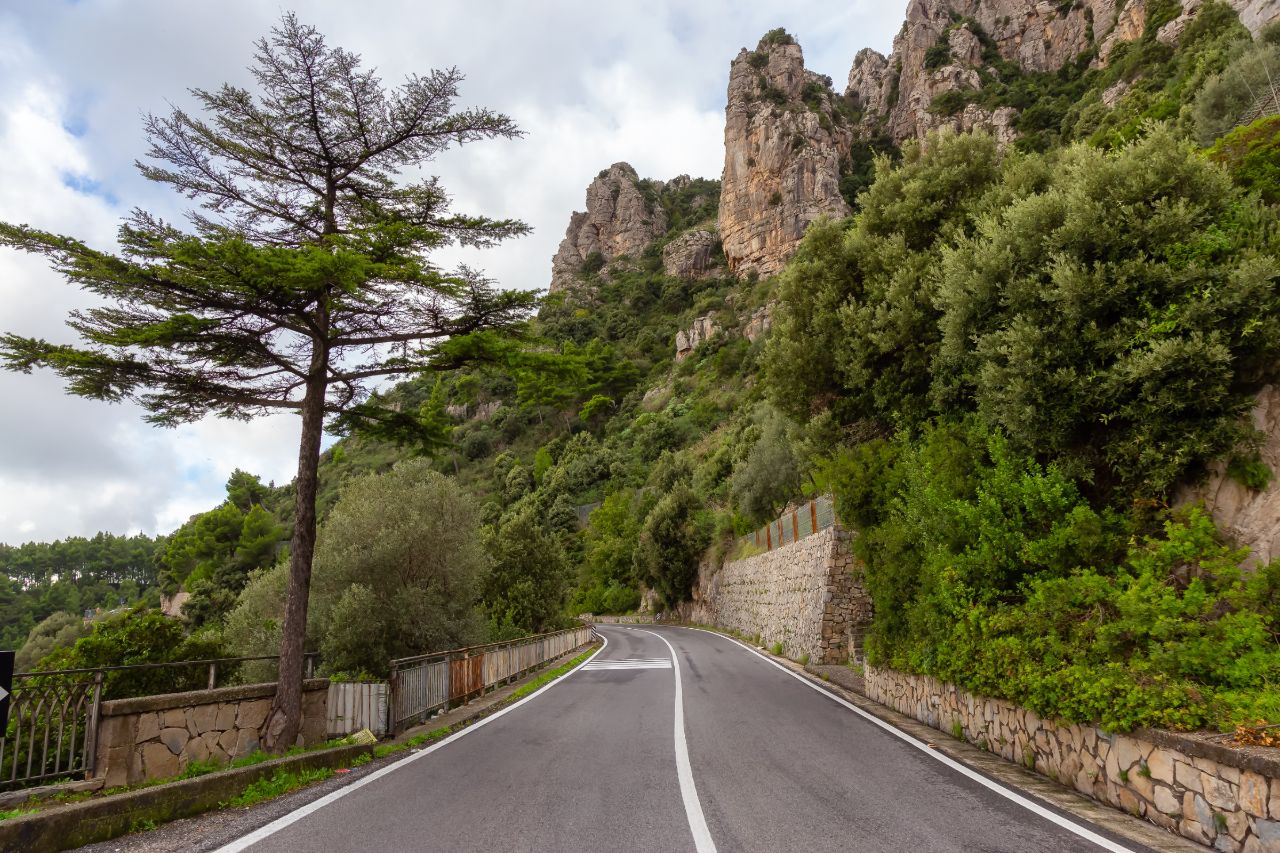If you’re coming to Italy as a tourist, chances are, you’ve asked yourself: Should I rent a car in Italy?
Renting a car in Italy has a number of advantages. Additional flexibility, access to hidden gems, the ability to create personalized itineraries, and opportunities for last-minute discoveries are just a few. However, there are also disadvantages that are important to keep in mind, like costs, complicated Italian laws, and different driving cultures.
A deeper dive into these pros and cons, as well as helpful tips, will help you answer the question “Is renting a car in Italy worth it?”. Let’s jump in!
Top 4 Reasons Why It’s Worth It
1. Flexibility and Convenience for Exploring Different Regions
Italy is divided up into 20 regions, each of which has unique cuisine, culture, and often dialects or languages. Some of the most well-known are Tuscany, Lombardy, and Campania.
Traveling to different regions is a great opportunity to explore the cultural and linguistic diversity within the country. But do you need to rent a car in Italy in order to travel between regions?
It’s not always easy to travel between regions via public transportation; some regions are known for their lack of buses and trains. Being able to drive yourself is a great way to head to various regions and allow your plans to be flexible.
2. Access to Remote and off-the-beaten-path Destinations

Beyond added convenience and flexibility, driving is sometimes necessary to access certain destinations.
For example, on the island of Sardinia, many of the region’s best crystalline coves and secluded beaches are only accessible by car or boat. If you’re into the outdoors, you’ll need a car to access certain hiking trails in the Dolomites.
These are just a couple of examples of remote and off-the-beaten-path destinations that are only accessible by car.
3. Freedom to Create Personalized Itineraries
It’s not easy to create a perfect itinerary if you’re relying on public transportation during your visit to Italy. Buses and trains certainly don’t always run exactly when you want them to.
Furthermore, it’s not uncommon for public transportation in Italy to be delayed- especially in the south.
With your own car, you’ll be able to create an itinerary personalized to your plans and personal preferences. Plus, driving is often faster than taking the bus, so renting a car in Italy could be worth it.
4. Enhanced Opportunities for Spontaneous Stops and Discoveries

Italy is praised for its big cities like Florence, Rome, and Milan, but that doesn’t mean they’re the only destinations worth visiting.
In fact, some of the country’s most amazing sights and experiences are those discovered by spontaneous stops along your journey. Of course, you won’t be able to stop and take in the sights if you’re on the bus or the train.
Having a car is a great way to ensure that you can stop when and where you want along your journey.
Cons of Renting a Car in Italy
Chaotic Traffic Conditions, Especially in Cities

Italy’s bustling cities, like Rome and Naples, are notorious for their chaotic traffic conditions. Congested roads, unpredictable drivers, and narrow streets can make driving stressful for foreigners. But don’t worry- later on, we’ll discuss the best way to rent a car in Italy and be prepared for driving conditions.
Depending on which city (or cities) you hope to drive in, it might be best to consider alternatives to driving yourself. Public transportation or taxis might be more convenient and efficient when exploring certain big cities.
Limited Parking Options and High Parking Fees
Parking in Italy is often limited. Public parking lots and garages are almost nonexistent, which means parking is mostly parallel parking along the streets.
Furthermore, fees in some cities can be quite high. If you forget to pay for your parking, you’ll risk getting a hefty fine from Italian authorities.
ZTL (Limited Traffic Zones) Restrictions in some City Centers

Italy implements ZTLs, or Zone a Traffico Limitato, in the center of certain cities and towns. The purpose of these restrictions is to preserve historical areas and help reduce congestion.
The areas are off-limits to unauthorized vehicles, including rental cars. However, while some ZTLS are active (attiva) at all times, others are active only during certain hours of the day. Research the specific rules and signage of ZTLs where you’ll be driving in advance since violations result in expensive fines.
Toll Fees and High Fuel Costs
Besides the cost of the car rental, you’ll have to factor in gas prices and potentially toll fees, depending on where you’re driving.
Also, remember that gas prices in Italy are presented in euros per liter, not per gallon. Currently, fuel prices in Italy fluctuate near €1.80 per liter, or $7.40 per gallon. Depending on gas prices where you come from, renting a car in Italy might not be worth it.
Challenges of Navigating Unfamiliar Roads and Signage
Unless you speak Italian, you might have some difficulty understanding Italian road signs. However, a GPS or digital map app can help you navigate streets and traffic rules.
If you decide to rent a car, it’s worthwhile to learn a few of the essential road rules ahead of time.
5 Things to Consider Before Renting a Car in Italy
1. Itinerary and Destination

First of all, you should consider your travel plans and destinations in Italy. Make that renting a car aligns with your itinerary, as some cities may have restricted driving zones or areas with limited parking options.
The country’s main cities, including Venice, Rome, Florence, Milan, and Naples, are well connected by train. However, getting to smaller Italian villages and hidden gems is more difficult without a car.
2. Traveling with a Group or as a Solo traveler
The size of your group, if any, should also play a role in your decision to rent a car. If you’re traveling with others, it may be worth it to rent a car and split the costs.
On the other hand, if you’re traveling solo, public transportation will certainly be the cheaper option. That’s not to say that solo travelers shouldn’t rent a car, though- driving across the country can certainly make for a fun solo adventure, but it might not be for everyone.
3. Comfort Level with Driving in another Country

Another aspect to think about is your comfort level with driving in Italy. As already mentioned, driving here can be a bit hectic for foreigners.
It’s okay (and very normal) if you don’t feel confident that you can safely navigate the Italian streets and road signs. If that’s your case, renting a car in Italy probably isn’t worth it and it’s best to stick to public transportation or taxis.
4. Budget Considerations, including Rental Fees and Additional Expenses
First, calculate your overall budget for your trip. Determine how much you could pay for the car rental, fuel, tolls, parking fees, and potential fines. Also, you should compare prices from different rental companies and note any additional charges, like insurance or young driver fees.
Then, you can see if renting a car fits within your overall travel budget or if alternative transportation would be best.
5. Availability and Convenience of Alternative Transportation options

In general, Italy is a country that’s very accessible by public transport. Big cities usually have extensive networks of metros, trains, and buses. Even smaller cities and towns can be well-connected.
However, there are some places where public transportation isn’t as accessible or available. Just remember that the decision to rent a car in Italy isn’t the same for everyone, and you should consider your own situation.
Tips for Renting a Car in Italy
Choosing the Right Website and Understanding the Terms and Conditions
When trying to find the best way to rent a car in Italy, there are certain factors that you should consider. Look for great customer reviews and research the reputation of websites. Make sure the website is transparent about pricing and opt for sites that feature comparison tools to easily compare prices.
DiscoverCars.com is one of the many options that features price comparing tools, as well as free cancellation.
Once you’ve chosen a website, read the terms and conditions of your rental. Pay close attention to the rental agreement, insurance coverage, driver requirements, payment process, and cancellation policies.
Familiarizing Yourself with Italian Traffic Rules and Regulations

It’s a good idea to research and understand local driving laws, Italian road signs, and speed limits. Italy has a reputation for chaotic driving, so be prepared for a different driving style than what you’re used to.
Before stepping on the gas, make sure you understand Italian traffic rules. Adhering to these rules is essential to avoid fines from authorities and to ensure safety. Familiarize yourself with parking regulations, especially in cities where restricted zones are common and parking options are limited.
Considering Insurance Coverage Options
Insurance coverage options can be overwhelming when navigating the car rental process in Italy. Understanding your options ensures peace of mind and protects you against unexpected expenses in case of accidents or theft during your rental period.
Typically, companies include basic coverage such as Collision Damage Waiver (CDW) and Theft Protection, but with a deductible. In order to minimize your financial liability, look into additional insurance options like Super CDW (SCDW). Or, check if your personal auto insurance or credit card offers coverage for rental cars in Italy.
Make sure to carefully review the terms, coverage limits, and any exclusions to make an informed decision that’s best for you.
Prioritizing Safety and Adhering to Local Driving Customs

Once you’ve gotten into the driver’s seat, prioritize the safety of yourself, your passengers, and other drivers. Buckle up, follow speed limits, and watch for pedestrians.
Also, keep in mind that Italy has a significant number of scooters and motorcycles that share the road. It’s not uncommon to see them zipping between cars, so make sure you’re paying attention
It’s important to be knowledgeable about driving customs and to always be aware of your surroundings and safety while driving. The best way to rent a car in Italy means not only finding the right rental but being safe and smart with that rental as well.
Alternatives for Renting a Car when Public Transportation Is Not Available
Day Tours and Organized Excursions
Organized tours are great options when you don’t want to rent a car but can’t get to your destination by public transportation.
Viator, for example, organizes fantastic tours and excursions that include transportation. That way, you get an authentic Italian experience but don’t have to stress about getting there.
Bike Rentals and Walking Tours

Other ways to get around are by bike and by foot, which are much more affordable than both renting a car and public transportation. In large cities, bicycles dot the streets and are readily available to rent through apps like Ridemovi.
You can also find plenty of walking tours (many of which are free, like the ones in Bologna and Rome).
Although renting bikes and walking are great ways to get around a city, though, they aren’t feasible ways to travel distances.
Should I Rent a Car in Italy? Frequently Asked Questions
Can I drive in Italy with my U.S. license?
Yes, you can drive in Italy with a valid U.S. driver’s license. However, you’re also required to carry an International Driving Permit (IDP) along with your license.
This document essentially translates your license and can be obtained from your local automobile association, like AAA, in advance. The IDP is not a standalone document, though, and it MUST be accompanied by your valid U.S. driver’s license.
Can I Pick up and Drop off the Rental Car at Different Locations in Italy?
Yes! Most major rental companies will allow you to pick up and drop off at different locations. Just keep an eye out and be aware of any charges that might come along with this freedom.
Do I Need Extra Car Rental Insurance in Italy?
While it isn’t mandatory to have extra car rental insurance in Italy, it’s highly recommended to have adequate coverage. The basic rental rate usually includes collision damage waiver (CDW) and theft protection, but it often comes with a deductible.
You should be able to find specific information in the terms and conditions of your rental agreement. You can also consult with your chosen rental company to help you make an informed decision about insurance coverage.
















![Should-i-rent-a-car-in-italy[1] Should I Rent a Car in Italy](https://italytravelsecrets.com/wp-content/uploads/2023/07/Should-i-rent-a-car-in-italy1-1068x542.jpg)





